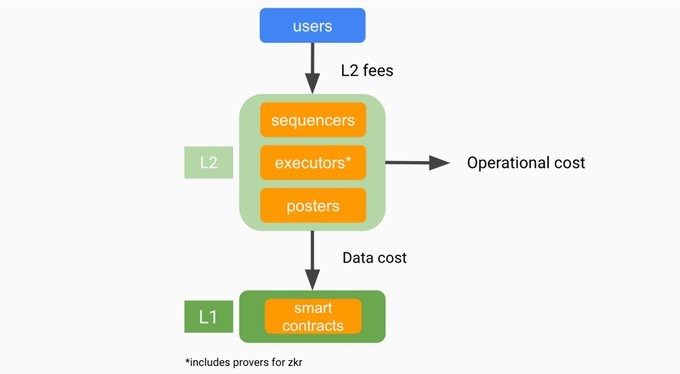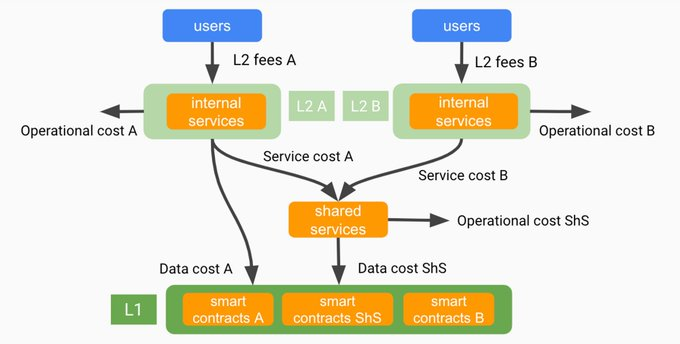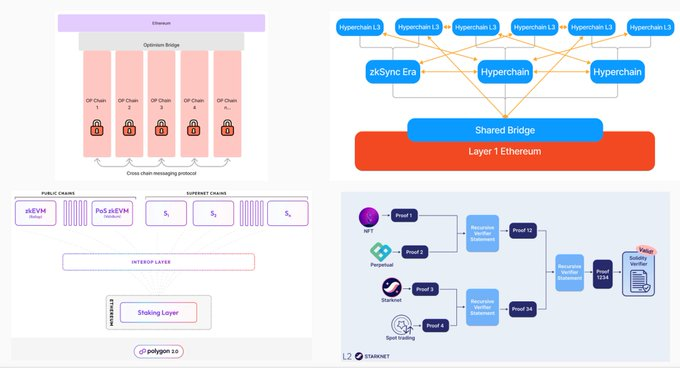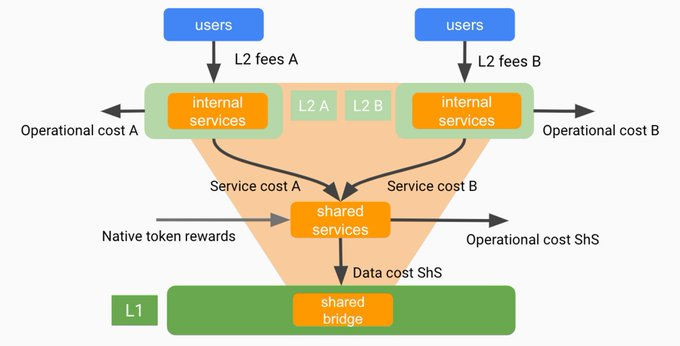Deconstructing Rollup Economics: How is revenue generated currently? Can a "Rollup Alliance" be built in the future to achieve interoperability?
Written by: @DavideCrapis
Compiled by: Huohuo, Baihua Blockchain
Have you ever wondered how Rollup generates such astonishingly high levels of revenue?
@ BuildOnBase has achieved over $2 million in revenue in less than 3 weeks… Inspired by @ DavideCrapis's recent post titled "Rollup Economics 2.0," let's dive into the economic model of Rollup.
Key points of this article:
1) The "old-school" business model of Rollup
2) How Rollup design has become more complex
3) Interoperability
4) The role of Layer 3
The following diagram illustrates the "old-school" model of Rollup as a revenue-generating model. As you can see, there are three main components in the system:

Users
Rollup Operators (Sequencers, Executors, Publishers)
Base Layer (L1)
How it works: This flowchart shows that users pay L2 fees (gas costs), operational costs (computational costs, servers, etc.), and data costs (processing transactions back to L1).
Thus, users pay fees that generate revenue, minus the costs of operations and data processing, which equals profit.
For Rollup, a dilemma is: should it create a balanced environment or pursue profit?
Each underlying DAO/core team must make key design decisions around optimizing L2 fees, redistributing MEV (Miner Extractable Value), and reducing data costs.
Should they retain profits or give back to the community?
This is where Rollup is becoming more complex, striving to increase security through shared governance, enhance efficiency through shared economics, and improve user experience by reducing liquidity fragmentation. For example, @arbitrum has been gradually pushing for decentralization of its sequencers, but recently, the community found that this was not their top priority, as shown below…

In fact, Rollup faces trade-offs in three areas:
1) Sequencing -> Operational costs of decentralization + costs to incentivize participants.
2) Data availability -> High costs of publishing data on L1.
3) State validation -> zkRollups have instant finality, but maintaining this feature also incurs significant costs.
Teams need to make choices among various trade-offs. As a user, understanding these choices is always most beneficial for me.
Security is clearly the most important. But what if your users choose to use another cheaper, faster chain that cares less about security? What then? This is the builder's dilemma. 🤷♂️

You see, this is why I feel sympathy for the builders in this space. The true decentralization ideals of some quality teams are often overshadowed by marketing, hype, and poor trade-offs viewed in the short term. This is life, and it’s a competitive market. However, we will see who wins in the long run…
Returning to this dilemma, and the solution proposed by @ DavideCrapis: aggregation.
Shared sequencing, batch publishing, and proofs are at the forefront of optimization. By reducing data costs, these measures enhance efficiency. For Rollup, future collaboration seems like an undisputed choice.
But does this pose security risks? What if a sequencer crashes? Or if a prover fails to operate normally? These are tough questions. But one thing is certain: collaboration in Rollup can enhance economic productivity. Shared services can lower costs, streamline transactions, and foster healthy growth.

The reasoning is simple, as shown in the chart above, you now have two sets of user fees, but only one shared service cost.
The formula is straightforward, as @ DavideCrapis described:

The proposed idea of a "Rollup Alliance" is quite exciting. In a perfect world, Rollups within the same "alliance" would naturally embrace shared services, as the costs of direct data publishing would be shared among them.
These Rollups share the bridging with L1, sharing all service and data publishing costs. After EIP4844, this will become very, very powerful.
Here are examples of the architecture designs of @zksync's Superchain, @OxPolygonDeFi's Supernetwork, and @Starknet. The core concept is: 'infinite' scalability, shared bridging, and aggregating costs among each individual Rollup.

Finally, we have Layer 3. For me, these are very interesting for specific community application use cases, such as gaming, social media, etc. The reason is that they do not require the high compatibility of decentralized exchanges (DEX) or money markets. Therefore, they can operate in their own execution environments, enjoying very low costs and high transaction speeds. These Layer 3s will "roll up" to Layer 2, paying the lowest packaging fees (since gas costs on Layer 2 are very cheap).
As for the economic model, the fees from Layer 3 become an additional revenue source for Layer 2, increasing their overall income.
Moreover, more users = the team is more likely to capitalize on opportunities to sell products, mint NFTs, or create profitable dApps.
As shown in the diagram below, charging more fees:

Costs associated with L2 are similar, including computational/operational costs and data costs.
For L2, there is no doubt that deploying L3 to increase revenue, generate applications needed by more users, and create new layers is a wise choice!
In the realm of Rollup, it is indeed an exciting time :)












